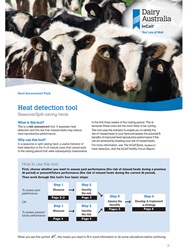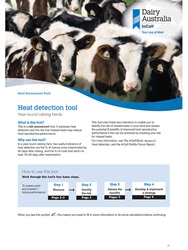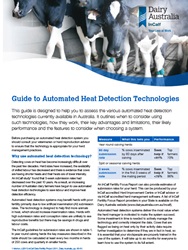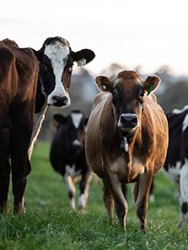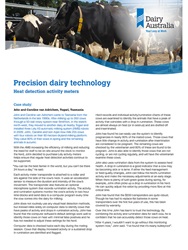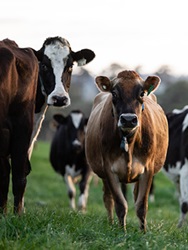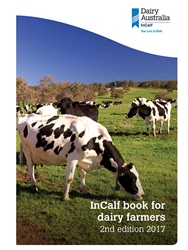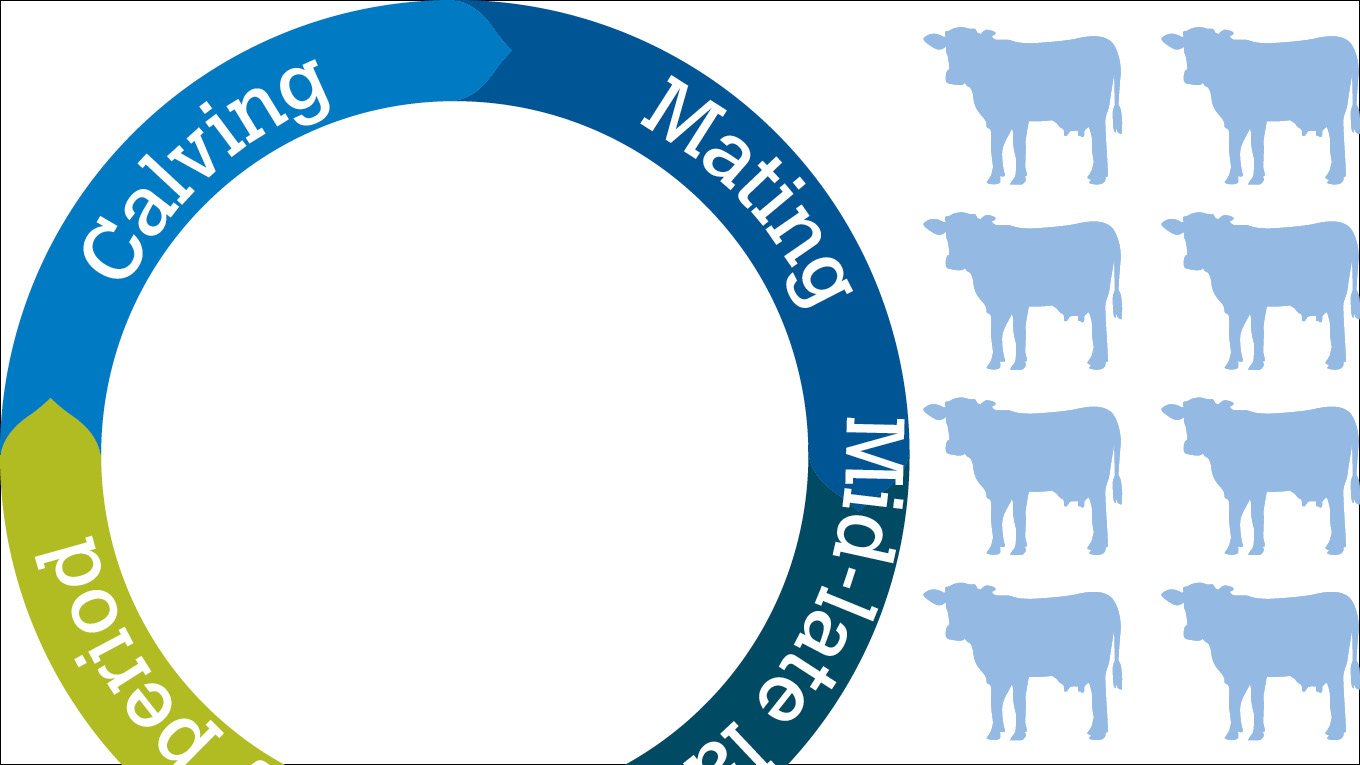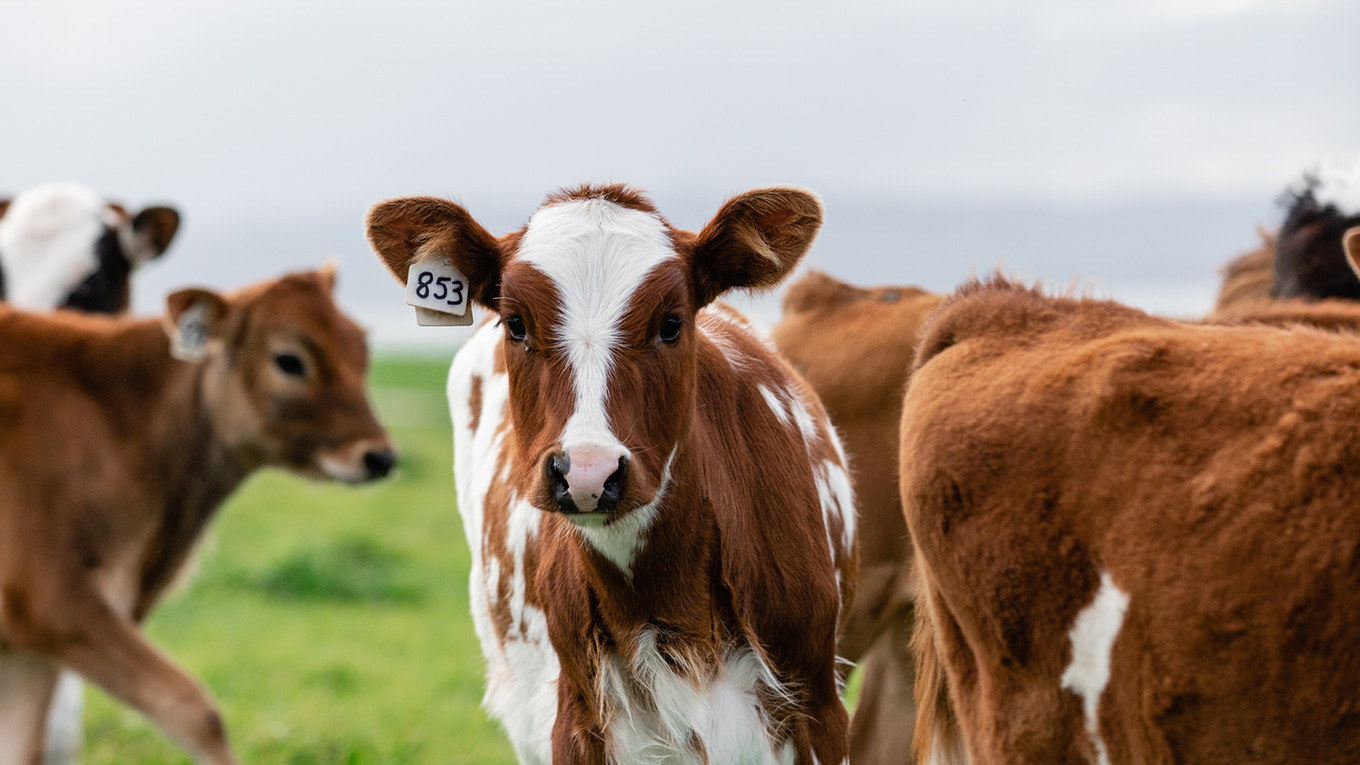Heat Detection
Heat detection aims to identify cows that are about to ovulate. Good heat detection programs can have a major impact on overall herd reproductive performance. The key to ensuring semen is not wasted and cows conceive at the right time is accurate heat detection.
InCalf research indicates that the best heat detection results are achieved by combining paddock observations and heat detection aids such as tail paint and heat mount detectors. A twice-daily time commitment outside of milking is required. This is a very accurate method if a farm team is well-trained and the cows can be easily identified in the paddock.
Dairy farmers should regularly assess their heat detection practices to see if they can be improved.
Submission rates
Calculating the submission rate – the proportion of eligible cows detected on heat and inseminated – is a good first step to measuring performance.
The submission rate can provide useful information on heat detection performance. A high submission rate needs:
- Cows to be cycling and showing heat, and
- To detect them when they show heat.
Split/seasonal calving herds should seek help if their three-week submission rate for early-calved, mature cows is less than 85%.
All-year-round calving herds should seek help if their 80-day submission rate is less than 61%.
Submission rates can be low for two reasons:
- Cows are showing heat normally but not being detected, and/or
- There are lots of ‘non-cyclers’ in the herd that are not showing heat (see non-cycling cows)
A Fertility Focus Report can help to check submission rate and heat detection efficiency, see InCalf resources.
The tools below may also be of assistance.
Heat detection tool: year-round calving herds
Heat Detective discussion groups
It is important that everyone on the farm knows the signs of heat, including employees.
The best heat detection programs start with careful timing, good observation and the effective and considered use of detection aids. Distinguishing and interpreting cow behaviour and other signs is critical. Farm owners should commit to training and refreshers for the farm team and keep good records if they are to improve.
Dairy Australia runs regular Heat Detective discussion groups through each Regional Development Program for those interested in learning from industry experts and other farmers about how to improve heat detection.
These are two hour, interactive, on-farm discussions which cover all aspects of heat detection, heat detection aids, AI timing and dispel a few common myths.
The period before mating begins offers an opportunity to practise heat detection skills, check for cows not detected on heat and anticipate when cows may next come on heat. This is a good time for farm team training. Experienced and capable people should work with and help less experienced team members to interpret signs of heat.
For best results, combine paddock checks with the use of aids to look for signs and indicators of heat.
Automated heat detection
Automated heat detection systems use electronic sensors to record one or more hormonal, physiological or behavioural indicators that change around the time of heat and ovulation in cows. A computer algorithm analyses the records and, based on alarm threshold settings for the indicators used, identifies those cows most likely to be on heat.
For further information on what to consider before purchasing an automated heat detection system, refer to the fact sheets, webinars and case studies below.
Heat detection activity meters
Guide to automated heat detection technologies
Case studies
These dairy farmers have implemented activity meters on their own farm and they describe their experiences with the technology.
Mark Billing, Colac, Victoria
Craiglands Dairy is a family-owned partnership consisting of Mark Billing and his wife. They milk about 450 cows on 280 hectares of dryland about five kilometres west of Colac, Victoria.
Heat Detection Activity meters: Mark Billing
John van Adrichem, Togari, Tasmania
John and Caroline van Adrichem and their son Arjan milk about 255 cows with four robots on their 80-hectare dryland farm at Togari in Tasmania.
Heat detection activity meters case study
Brian Chappell, Coraki, NSW (Automated heat detection in a year-round herd)
Brian and Elizabeth Chappell describe their experiences with implementing automated heat detection on their farm alongside dairy veterinarian Dr Carl Hockey, who completed his PhD on automated heat detection systems.
InCalf case study: Chappells and Mathers
Toby and Nick Leppin, Bena, Victoria (Automated heat detection in a seasonal calving herd)
Automated heat detection has allowed the Toby and Nick Leppin to achieve significant labour savings and work flexibility, as well as eliminate the use of bulls. In this video, they share their experience with implementing this technology, including their tips and challenges for making it work.
